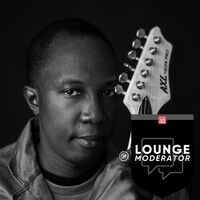Hi All: I used to be quite a singer back in the day - so here's a song I wrote and recorded called Sweet Freedom. I don't sing as much anymore but would love some feedback. https://soundcloud.com/discover
Composing
Discuss, share content, offer tips and advice on hardware, software, style, strategies, process, work-flow and the business of scoring a film, video or theater production
What Emotion Do You Look for First When Choosing Music for Film?
I’m curious — for those of you who music-supervise your own projects or pick temp tracks…
What’s the very first emotion you listen for?
Is it tone? Heartbeat pacing? Tension? Vulnerability?
I’ve been curating a cinematic playlist for my own sync catalog, and I’m always fascinated by how differently dir...
Expand post
Create what emotionally moves you...regardless the style....chances are it will move others as well and those are always needed in scenes. Create the feel that inspires you and as the composer you the...
Expand comment
It's almost always about the feeling of the song. I will often play with different genres, tempos, moods, styles. If it's a sad scene, do I want ironically happy music? If it's happy, do I want to try a bit of melancholy? Etc...

Doesn’t it depend on the emotional music scene within the movie? Or are you / we discussing making music without the video, Kat Spencer ?

Doesn’t it depend on the scene which is going on?
In my short example with Harry Potter, the two characters are having a battle talk, so I created a back and forth minor chords before the other fight s...
Expand comment
Hi Kat,
Bill from Tucson. I'm a writer/producer, not a musician or composer. Your question got me thinking about my film. (And The Pudgie Goes To). My term for the film is, music enhanced. There are 15...
Expand commentComposers, This One’s for You! Share Your Thoughts on What’s Next in Film Music Education

If you’re passionate about composing for film and want to sharpen your craft, learning directly from award-winning composers, orchestrators, and music supervisors can take your scoring work to the next level. These webinars and classes cover everything from storytelling through music to working with...
Expand post
Great list! I'd love to add a topic or two for next year: How to collaborate effectively for screen scoring and step-by-step guide to protecting your IP for music.

Composing Education for different genres, James Lagrimas, like a webinar on scoring a Comedy movie, a class on scoring a Thriller show, and a lab on scoring an Action movie....
Expand comment
These are great James Lagrimas - aside from education, I'd consider having an AMA hosted by a composer with film experience.

I love the idea of genre specific scoring webinars! I'd like to see those added too.
Something touching on how music scores build tone and atmosphere in the background would slide perfectly into a set of genre webinars.

I bought Terence Blanchard’s video. Good one !
.. from what I went through and seen.
There’s some good detailed information from
Terrence’s video ! I need to get back to this video as well.
I ran acros...
Expand commentMy Early Christmas Present
Hey all, so my wife surprised me with an early Christmas present!! She purchased Tom Holkenborg's Brass from Orchestral Tools!! Have any of you used this or heard it? It sounds amazing to me, I'll be posting more about it as I dig into it, but if any of you have a thoughts or comments about this library I would love to hear them!!
What Would YOUR Musical Look & Sound Like?

So, there are many great holiday films out there, but as I was trying to think, I couldn't remember too many that were "Thanksgiving Only" focused. Some roll Thanksgiving and the other -ber holidays together. So, let's have a good time. If you had 1 week to write a thanksgiving (or if not-USA harves...
Expand post
Here's mine: Title: Thanks-Viv-Ing Logline: When Vivian, a harried young mother and kindergarten teacher, finds herself juggling the chaos of directing a Thanksgiving-themed play, she must navigate th...
Expand commentHave You Ever Lost Your Spark as a Composer?
Have you ever lost your spark, your motivation . . . you . . . for a minute? A month?
Or longer?
Sometimes it’s overwhelm. Sometimes it’s a personal tragedy.
Sometimes nothing “happened,” yet everything inside feels different.
It can be debilitating when you’re fumbling around in the dark, trying to fi...
Expand post
I can happily say that I have not lost the spark yet. I am only slowing down with writing songs now simply because I have written more than 450 of them. I am now busy uploading them to sites like Fres...
Expand comment
Wyman Brent This is true! Best of luck with all of the uploads!

Two years ago I walked away completely from composing, from playing the guitar, all of it. I was burned out from working so hard and Covid wrecking some good things I had going after school, I had jus...
Expand comment
There was a time during the years 2013 to 2015 when I didn't write as much. A lot happened during that time, most tragic was my aunt died of leukemia and I just didn't want to write or vlog. It wasn't...
Expand commentThe Music of Frankenstein with Alexandre Desplat
If you’re interested in the craft and emotional architecture behind film scoring, this is a must-watch conversation.
Two-time Academy Award–winning composer Alexandre Desplat sits down with Jon Burlingame to discuss his newest score for Frank...
Expand post
I will be watching this!! Ashley Renee Smith thanks for sharing!!

Thanks for sharing the conversation, Ashley Renee Smith. Guillermo del Toro's Frankenstein is my new favorite movie of the year and my favorite Frankenstein movie. What stood out to me most about Alex...
Expand commentHappy Halloween, composers!
Sometimes the “scariest” thing we do isn’t facing ghosts, it’s facing ourselves.
Maybe it was scoring your first film, sharing your original music, or trying a completely new style.
What’s the scariest creative risk you’ve ever taken that helped you grow?

Justin Wildridge for sure!!

The scariest situation was when we suddenly got Peter Jackson's King Kong dropped in our laps at James Newton Howard's studio. 4 weeks to write and record a 3 hour film. Cue the 2 AM meltdown I had in...
Expand comment
Till now, the scariest risk was to contact a professional film composer to get his feedbacks on my work. I asked him to give me a sharp answer : either it's unworthy, or it's way far from good and nee...
Expand comment
Nice to meet you Julien CLÉMENT - fun fact, Clement is my maiden name.
How Long Have You Been Composing?
I remember from a really early age making up songs. I'd play them on the piano (instead of playing the assigned scales) or write lyrics down in a notebook. They'd be about nothing, or big feelings I was having, or something that happened at school that day. Sometimes they were even satirical. When did you discover composing?

Libby Wright I started in 1996, right after I stopped taking piano lessons, which I started when I was 6 years old. That's when I discovered I could compose. I had to be away from the "structured lear...
Expand comment
At about 13 when I suddenly realized it´s possible to play by ear. And yes, Kat, I dropped piano lessons too!

Guitar Instrumental music and Songs for to many years. Orchestral film type compositions for about ten or so years!

Started on guitar as a child in the late 70s. Played rock for years but in 2000 I started working for a composer in a commercial post studio in Sacramento. 2003 moved to LA and been doing film work ever since.

Composing seeded into my mind at teenage (~ 90's), then stayed dormant for decades. I've listened to thousands hours of musics of any style since then and never stopped playing the piano that I starte...
Expand commentHow ‘Sinners’ Found a Sound as Big as Its IMAX Imagery
I’’ve put this post in the Composing Lounge, as it covers the music production for Ryan Coogler’s ‘Sinners’ as well as sound and music recording.
When I went to see the film, one of the things that had the biggest impact on me was the sound. I loved every aspect of it, from the songs to the ambience...
Expand post
I enjoyed the story, the acting, the cinematography, the music, and more, Geoff Hall! It's hard to pick a favorite thing. The music made me feel like I was back in that time period. The story, acting,...
Expand comment
Maurice Vaughan agreed, Maurice. It was a totally immersive experience. In fact, we talk a lot about immersive cinema and I think we should use ‘Sinners’ as an exemplar when we talk about this....
Expand commentSteinbergs Cubase version 15 has been launched.
So the next iteration of the Cubase DAW software has been released, version 15. I personally in a big cubase user, but have played around with many of the more popular DAW's like, Digital Performer, Logic, and started on Cakewalk when it was a bigger deal many years ago.
If you're a cubase user like...
Expand post
Kerry Kennard When I was in school the think was and still is I think, but is changing because of the Expression Map technology, to have one midi track per articulation for all instruments groups. So...
Expand comment
Morgan Aitken Yea, the Omnivoice plugin is pretty cool for sure! I haven't messed with it yet to much I will say though.

Kerry Kennard , I'm kinda musically illiterate... so, who is Trish B?

Morgan Aitken , the link you have above brought up Trish, ... some last name starting with B.
Now, it's right ... hearing the thin voice from OmniVocal. Yikes, ... it's def. thin to me.
Glad it does s...
Expand commentHow Music Shapes the World of Fallout
What does the apocalypse sound like? According to music supervisor Trygge Toven, it’s a blend of heartbreak, irony, and mid-century optimism that perfectly mirrors Fallout’s retro-futuristic wasteland.
In this insightful interview, Toven explains how he shaped the show’s soundscape, balancing compose...
Expand post
Music and sound can really enhance shows (like Fallout), movies, etc., Ashley Renee Smith. I add music in my scripts. It's just something like "Classic Rock plays on the radio." I've also been focusin...
Expand comment
Ashley Renee Smith I’m looking forward to Fallout 2, how about you?
https://youtu.be/ECI3eCAxRGw...
Expand commentTop Contributors
Click next to the topics below to subscribe to a topic. means you're already subscribed.
CRAFT AND BUSINESS
- Acting
- Animation
- Authoring & Playwriting
- Cinematography
- Composing
- Distribution
- Filmmaking / Directing
- Financing / Crowdfunding
- November Write Club Challenge
- OTT & Transmedia
- Post-Production
- Producing
- Screenwriting
- TV Series Pitch Document Writing


















1 person likes this
I have two - here is one: https://soundcloud.com/sharon-mandel-902843588/04-shoeless-prison-blues...
Expand commentI have two - here is one: https://soundcloud.com/sharon-mandel-902843588/04-shoeless-prison-blues
1 person likes this
https://soundcloud.com/sharon-mandel-902843588/03-sweet-freedom
Thanks, Ilanna Mandel. I just listened to both songs and followed you on SoundCloud. Your singing and songs are incredible!
1 person likes this
Aww thank you. I always felt the folk blues song had potential and I'd love to sell it or something!
You're welcome, Ilanna Mandel. I like both songs, especially Sweet Freedom! I hope you sell them/find people to use them!